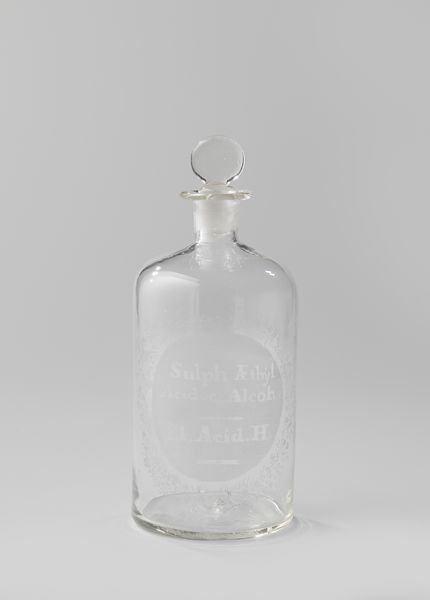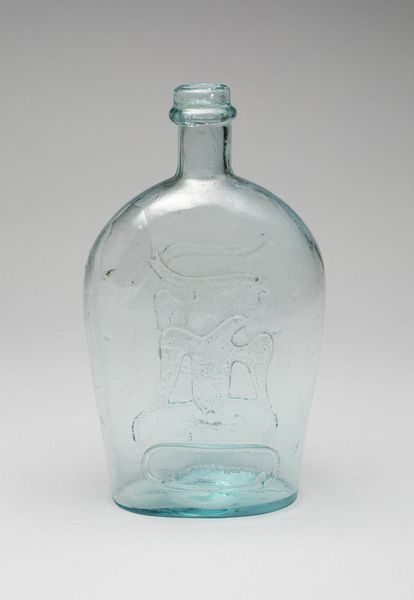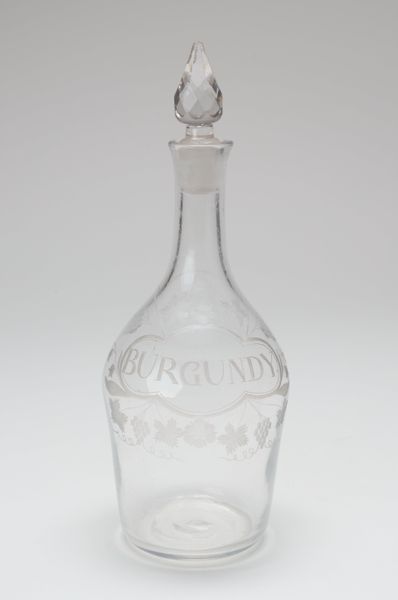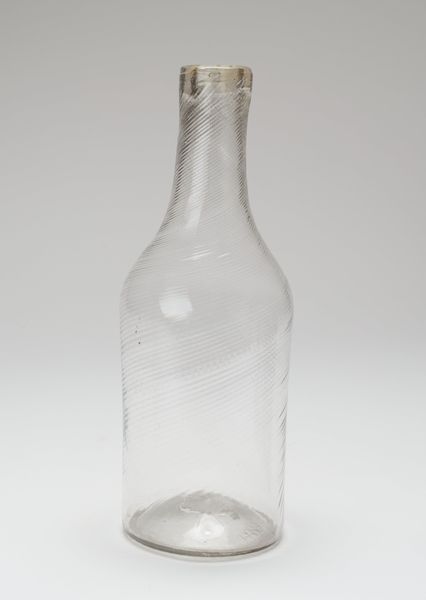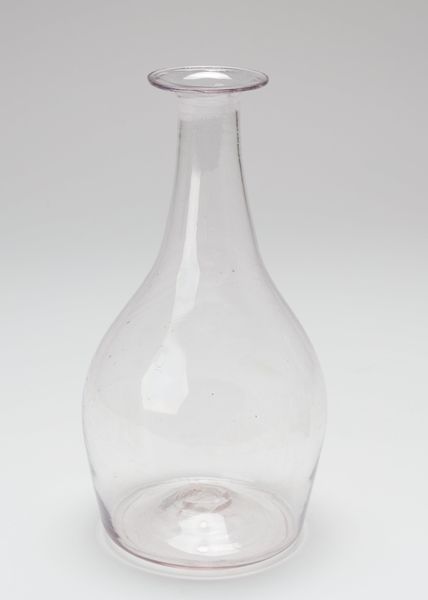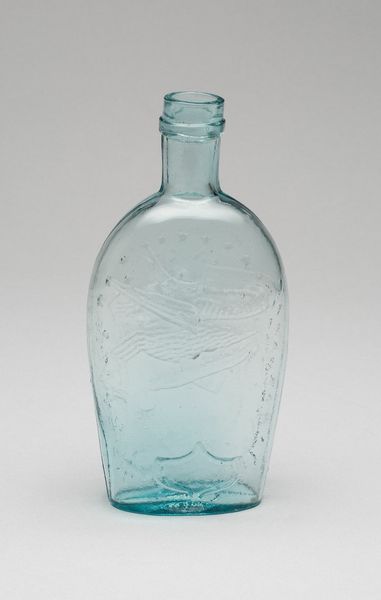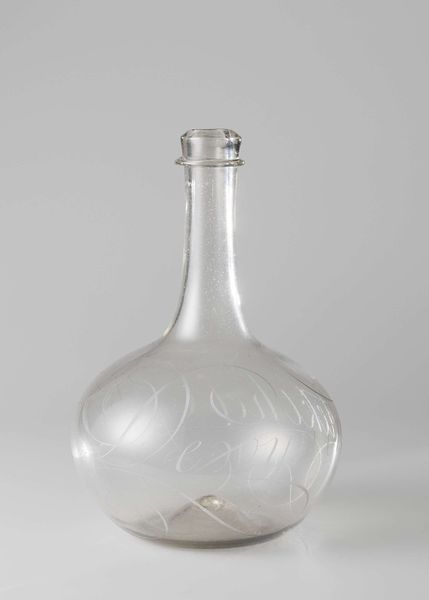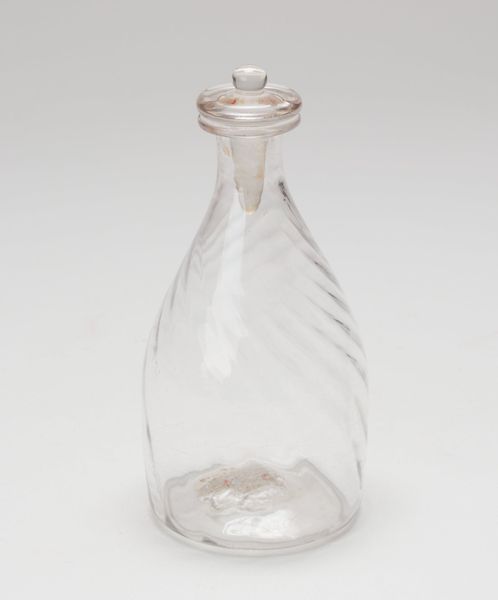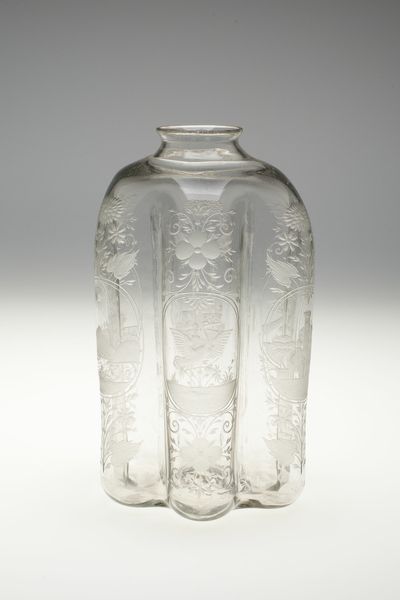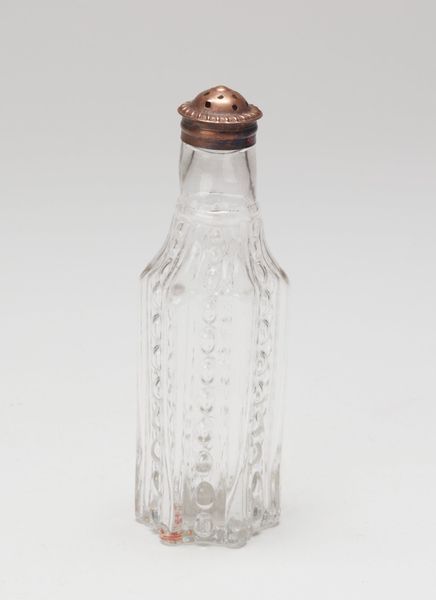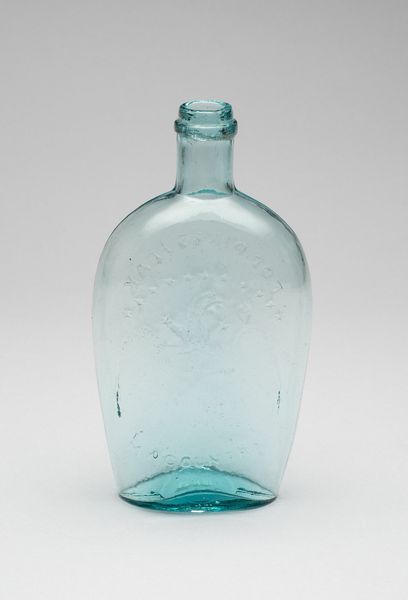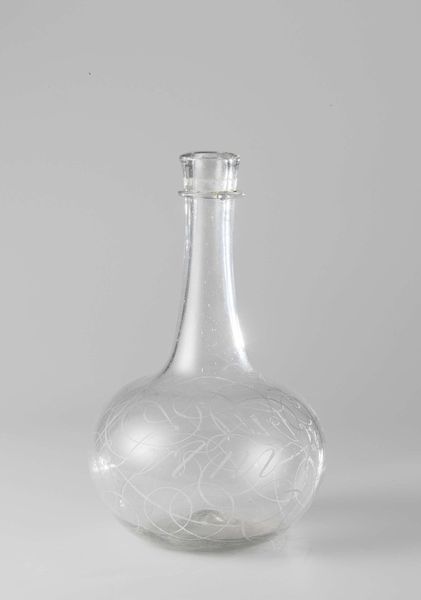
glass
#
glass
#
united-states
Copyright: Public Domain
Editor: This delicate glass liquor bottle was crafted by Stiegal Glass Works sometime between 1765 and 1780. The floral engravings give it a really refined appearance, despite its utilitarian function. How do you interpret this work within its historical context? Curator: It's important to situate this piece within the rise of consumer culture in colonial America. This bottle wasn't just about storing liquor; it was a statement of social status, particularly amongst white settlers. Consider the craftsmanship involved—the delicate engravings speak to leisure and privilege. How might this object reflect or even reinforce the social hierarchies of the time? Editor: I see your point. The fine details suggest a level of luxury, implying it belonged to someone of means, someone who probably wasn’t marginalized. Curator: Precisely. The liquor itself, likely imported or distilled using enslaved labor, further complicates its narrative. Think about the absence of those voices in its creation and consumption. How can we use objects like these to critically examine the economic and social exploitation woven into early American society? Editor: It's sobering to consider those layers. So it is about reflecting the imbalance in social stratifications? Curator: Exactly! This bottle is a looking glass into a world built on inequality, class, and the exploitation of labor. This kind of analysis can uncover truths about that world that the visual delight and refinement mask so well. Editor: Thank you. It really opens your eyes to the many layers of meaning behind everyday objects. Curator: My pleasure! Now let's look at what kind of societal rituals are at play, if any.
Comments
No comments
Be the first to comment and join the conversation on the ultimate creative platform.

